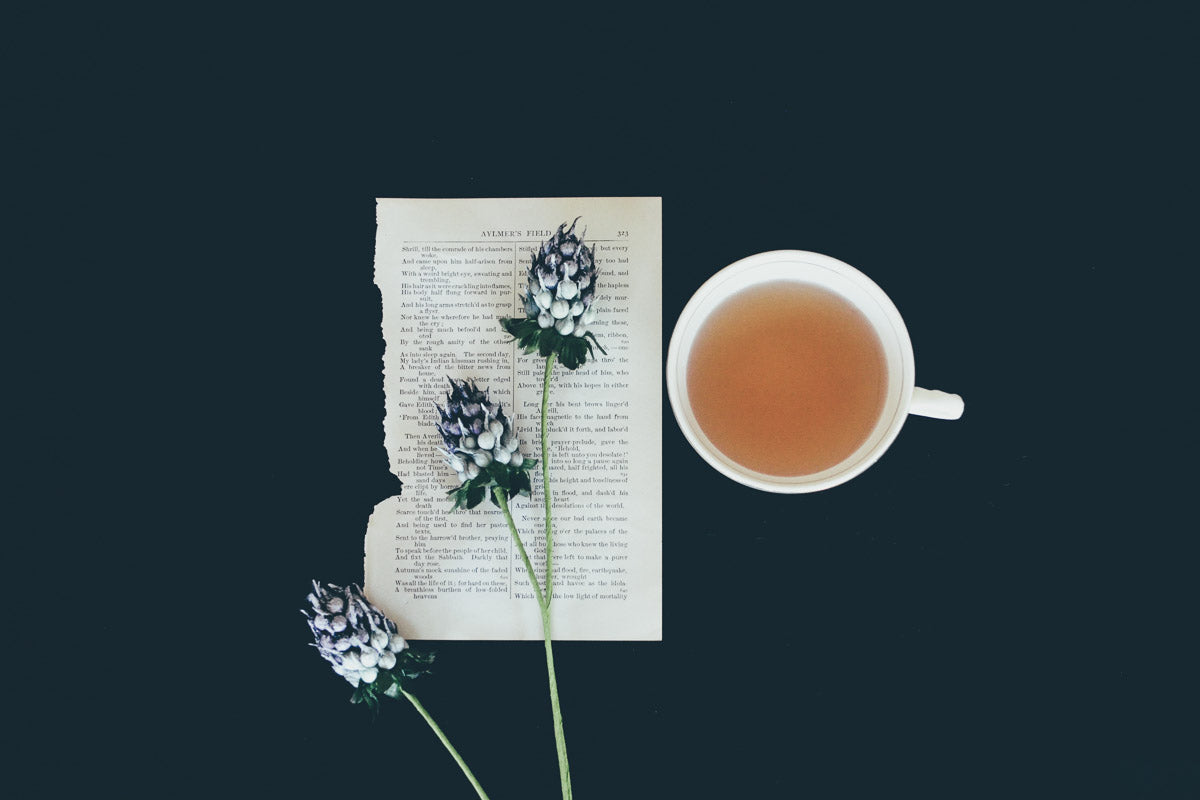
Terms Every Tea Drinker Should Know

What’s the difference between a teapot and a kettle? What is a chasen? How can you describe the delightfully, well, green flavor of green tea?
Take one step into the world of tea and you’ll quickly discover you could spend a lifetime learning about all the different tea variations, infusion practices, rituals and nuances of this ancient brew. If you’re at the point where you don’t know a white tea from a wild tea, or why some teas should be considered astringent but never bitter, this guide is for you.
Kinds of Tea
There are a lot of different types of tea...these are just some of them!
Artisan tea: Used for high-quality loose leaf tea that was made by hand. Artisan tea, or artisanal tea, is also often used to describe “gourmet” or “specialty” teas as opposed to your standard tea bag brand.
Assam tea: a black tea named after Assam, India, where it’s cultivated – it’s often used in breakfast teas or Earl Grey
Breakfast tea: refers to strong black tea blends that are often drunk with milk, such as English Breakfast or Irish Breakfast
Black tea: fully oxidized tea leaves from the Camellia sinensis plant
Ceylon tea: a black tea produced in Sri Lanka’s highlands (formerly called Ceylon) and known for having a citrus flavor
Camellia Sinensis: the plant that all true teas come from
Darjeeling: a tea grown in Darjeeling, India that can be processed into black, green, white, and oolong tea and has a floral aroma
Earl Grey: black tea flavored with bergamot oil to give it a distinct flavor
Flavored tea: tea with other ingredients and flavorings added to it, such as flowers, spices or fruit
Green tea: unoxidized tea leaves that have been steamed or pan-fried to stop the oxidation process and retain a fresh flavor
Kombucha: a fermented drink that uses sugary tea as a base
Oolong tea: a semi-oxidized tea
Red tea: the name for Chinese-style black tea
Scented tea: scented tea leaves that have absorbed the aroma of fresh flowers, such as jasmine or chrysanthemum
Single origin tea: tea leaves that were grown and harvested from one specific location
Tea blend: a mixture of different types of tea leaves, including either different types of leaves, such as green and black, a mix from different farms or countries, or tea leaves combined with flavorings
Tisane: the proper term for what we often call “herbal tea” (though it’s technically not tea at all since the brew is made from herbs instead of leaves from the Camellia sinensis plant)
White tea: the least processed type of tea that’s made by simply drying tea leaves
Wild tea: tea leaves that come from a wild, naturally grown plant instead of a plant that’s been cultivated on a tea plantation
Brewing tea
These are some terms for brewing tea and the different tools and vessels you can use.
Chasen: Japanese bamboo tea whisk used for properly preparing matcha – it’s what gives matcha its famously smooth foam
Chawan: Japanese tea bowl used for drinking matcha
Infusion: the result of steeping tea or a tisane in water
Kettle: used only for boiling water, not to brew your tea in
Teapot: used for brewing tea, not for boiling water
Washing the leaves: a quick first infusion that removes any impurities from the leaves and is tossed before doing a second, longer infusion
Tea Tasting
Much like wine, tea can be described according to its aroma, flavor, mouthfeel and aftertaste. These are some terms that you’ll often hear to describe tea and that you can use yourself when trying to explain to someone the type of tea you prefer or want to purchase.
Aftertaste: a sweet taste that appears after drinking some quality teas
Aroma: the fragrance of tea, whether you’re talking about the dry leaves or brewed tea
Astringency: creates a feeling of dryness or puckering in the mouth caused by tannins in the tea leaves
Bitterness: bitterness often comes from steeping tea too long or poor quality tea
Body: the tactile element of a tea’s feeling and weight in your mouth, such as light, medium or full
Bright: describes a lively, fresh tea that refreshes the palate
Full bodied: a term often used with strong black teas
Malty: a term mostly used to describe Assam tea
Umami: the famous Japanese way to describe a satisfying savory flavor can also be used to describe some flavors in Japanese teas
Vegetal: this is another word often used with Japanese teas that have a fresh green and herbaceous flavor, such as sencha

